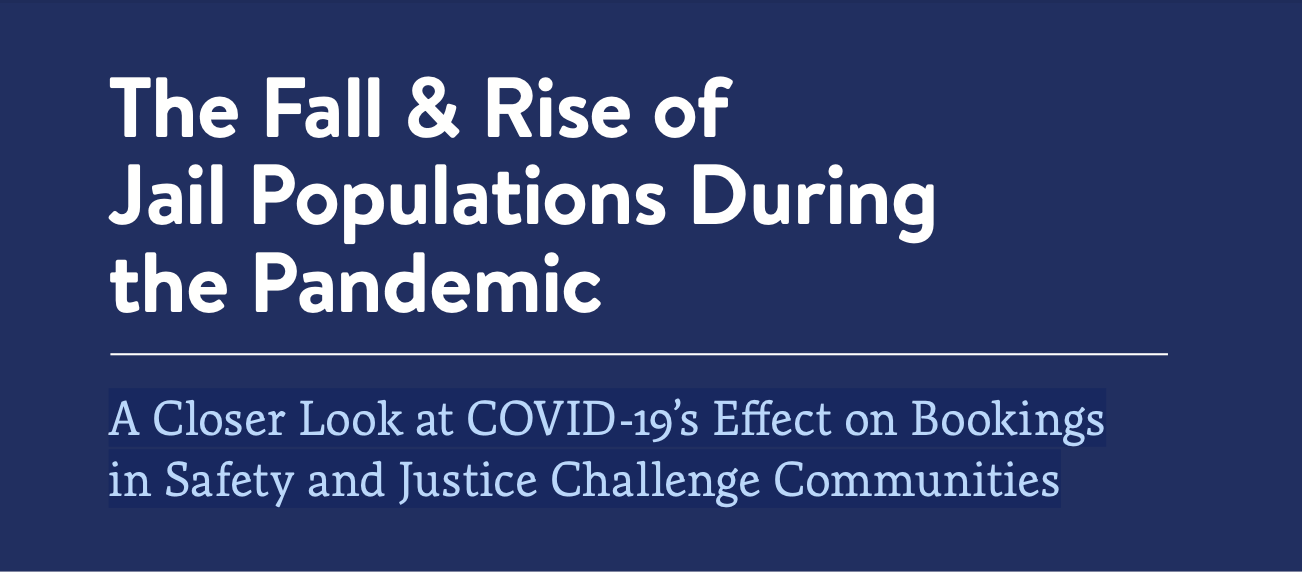Report
COVID Data Analysis Incarceration Trends November 18, 2022
Measuring Progress: The Fall & Rise of Jail Populations During the Pandemic
A Closer Look at COVID-19’s Effect on Bookings in Safety and Justice Challenge Communities
Across the country, counties seeking to curb the overuse and misuse of jails have looked to a common entry point to do so: their front doors. Since the Safety and Justice Challenge (SJC) launched in 2015, participating communities have implemented data-driven strategies that have helped reduce the number of people booked into their jails, reductions often closely linked to declines in overall jail population. By January 2020, just prior to the onset of COVID-19, bookings had declined in SJC communities overall by 13 percent, with no negative impacts on community safety: crime trends remained stable or decreased following SJC implementation. When the pandemic started spreading across the United States in early 2020—especially rapidly within jails—SJC communities began implementing emergency measures to reduce their jail populations, many of which directly impacted bookings and resulted in steep declines.
In an effort to understand how these declines were achieved in individual communities, and gain insight into how to sustain these lowered populations, SJC site coordinators collected information on the strategies implemented and closely tracked jail trends. This brief seeks to expand upon findings from Measuring Progress—an online tool developed by the CUNY Institute for State & Local Governance (ISLG) that measures jail trends since SJC implementation—to explore booking-related trends across communities pre- and post-COVID, offering a first look at how some of these emergency decarceration strategies may have impacted trends and what has happened since normal operations have resumed.
